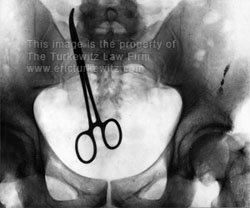 Ever since the Great Flood swept over the earth in the days of Noah, or at least since I was sworn in 28 years ago, New York’s contingency fees formula in personal injury cases has remained static: Lawyers get paid their contingency fee off the net recovery, not the net gross.
Ever since the Great Flood swept over the earth in the days of Noah, or at least since I was sworn in 28 years ago, New York’s contingency fees formula in personal injury cases has remained static: Lawyers get paid their contingency fee off the net recovery, not the net gross.
And now that is changing.
A short tutorial for those who might not get the significance: If a case settles for $100, and the lawyers advanced $10 in expenses, then they first get paid back their $10 and the legal fee is calculated on $90. Thus, a $60 recovery for the client and a $30 fee for the attorneys if the fee was based on one-third of the net recovery. (Medical malpractice cases, while being far more difficult and complex, have lower fees.)
If, on the other hand, we were paid off the gross recovery, the client would be paid $66.67 and the attorneys’ fee would be $33.33. Then the client would pay back the $10 in expenses and net out $56.67. The effect of compensating attorneys off the net was that the attorneys were paying ⅓ of the expenses of the litigation.
But New York’s second appellate department has now changed rule NYCRR § 691.20(e), which formally read that the fee:
shall be computed on the net sum recovered after deducting from the amount recovered expenses and disbursements for expert medical testimony and investigative or other services properly chargeable to the enforcement of the claim or prosecution of the action.
Now, however, counsel is permitted to give the new clients a choice of how they wish to do it. The clients can either front the costs themselves (which most are economically unable to do) and allow the fee to be calculated against the net, or the clients may elect to front the costs themselves and have the fee calculated against the gross. Here’s the new rule: Contingency Fees in PI Rule Change
Is this good for clients? At first blush, some might say no because it means that the attorneys are no longer paying ⅓ of the disbursements — in the end the client is getting $56.67 instead of $60, in the example I used.
But in actuality, a great many cases aren’t so clear cut as to whether lawyers will take them or not because some are not financially viable by using the “net” formula. If there is only $25-50,000 in insurance, after all, and a lawyer thinks she may have to pay $5,000 – $10,000 in expenses, many will simply decline the representation.
We see this happen in medical malpractice cases all the time due to the low fees, resulting in the medical community enjoying de facto immunity for most acts of malpractice due to the very low legal fees we have in New York. While tort “reformers” claim this is a good thing, the real-world result is that the loss is then borne by the victims and taxpayers who must front the costs of the loss instead of the people or institutions responsible.
Word has it that the other three appellate departments in New York will soon follow suit with the altered fee calculation.
But one rule remains hard and fast and unchanging- when we lose we get zip. And we will also, most likely, be eating the expenses.
